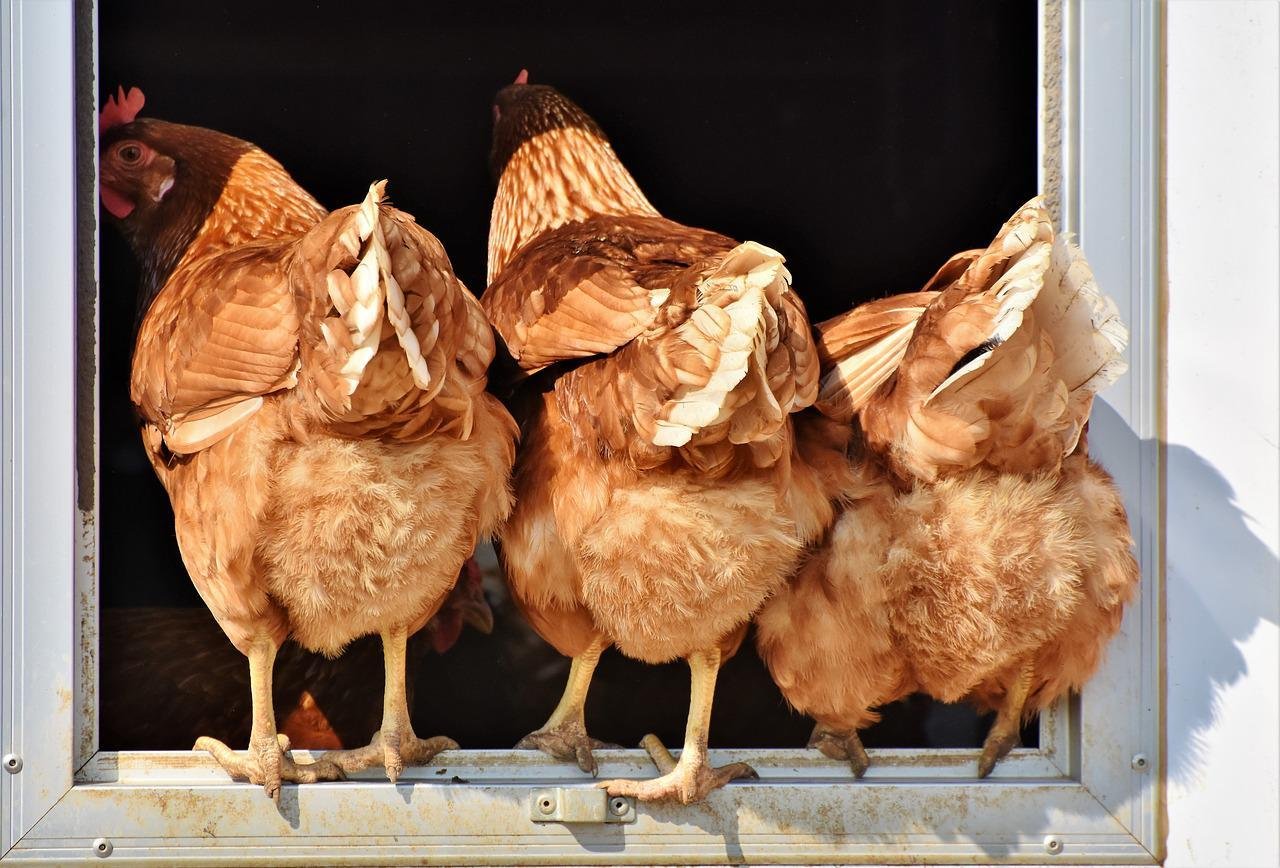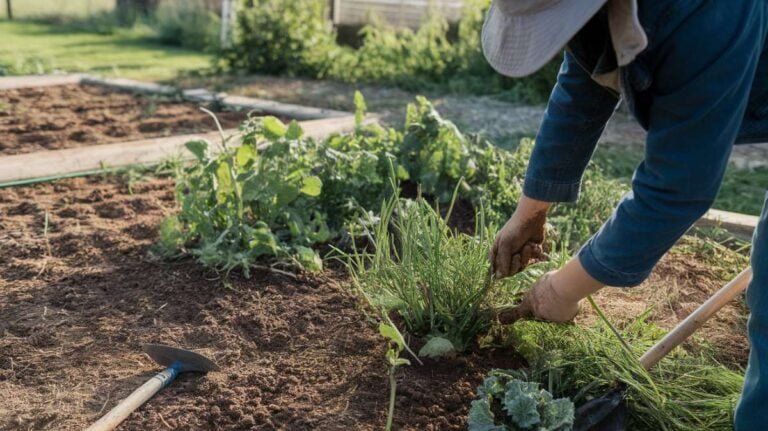Is Raising Chickens Cheaper Than Buying Eggs?
Just a heads up, this post contains some affiliate links. That means that we earn a small commission if you buy the product at no extra cost to you. That allows us to continue to research and share interesting articles with you. :)
Inexpensive backyard chickens have been gaining popularity in recent years as people look for ways to save money on groceries, but is raising your own chickens really cheaper than buying eggs from the store?
The cost of raising chickens and the cost of buying eggs can vary depending on a number of factors. However, in general, it is typically cheaper to raise chickens and collect their eggs than it is to purchase eggs from the grocery store. The main cost associated with raising chickens is the initial investment for the animals and their housing, as well as the ongoing costs for feed and bedding.

If you’re interested in saving money and eating healthier, you may have considered raising chickens. Just like any animal, there are costs associated with keeping chickens.
They need food, water, shelter, and medical care just like any other pet. However, if you’re willing to put in the time and effort, raising chickens can be a fun and rewarding experience that can save you money in the long run.
Let’s take a look at the costs associated with both options.
Breaking Down The Cost Of Raising Chickens
Doing a simple bit of maths will help us work out the answer to this question:
The average price of eggs is £2.20 per dozen, or approximately 19 pence (£0.19) per egg (as of January 2022). This price had actually been decreasing in recent years, from a high of around £3.20 in March 2014, and has crept up slightly in the six months leading up to January 2022.
If you have 3 chickens and each lays 220 eggs a year in their first 2 years that equals 1320 eggs, working out to 110 dozen eggs in 2 years.
Each chicken needs around 120g of food (layers pellets) per day, at a cost of approximately £12 for 20kg (working out to 21.6 pence to food your flock at £0.072 per bird, per day). This works out to £157.68 to feed your three chickens for two years.
£157.88 divided by 1320 eggs equals around 12 pence (£0.12) per egg or approximately £1.43 per dozen eggs.
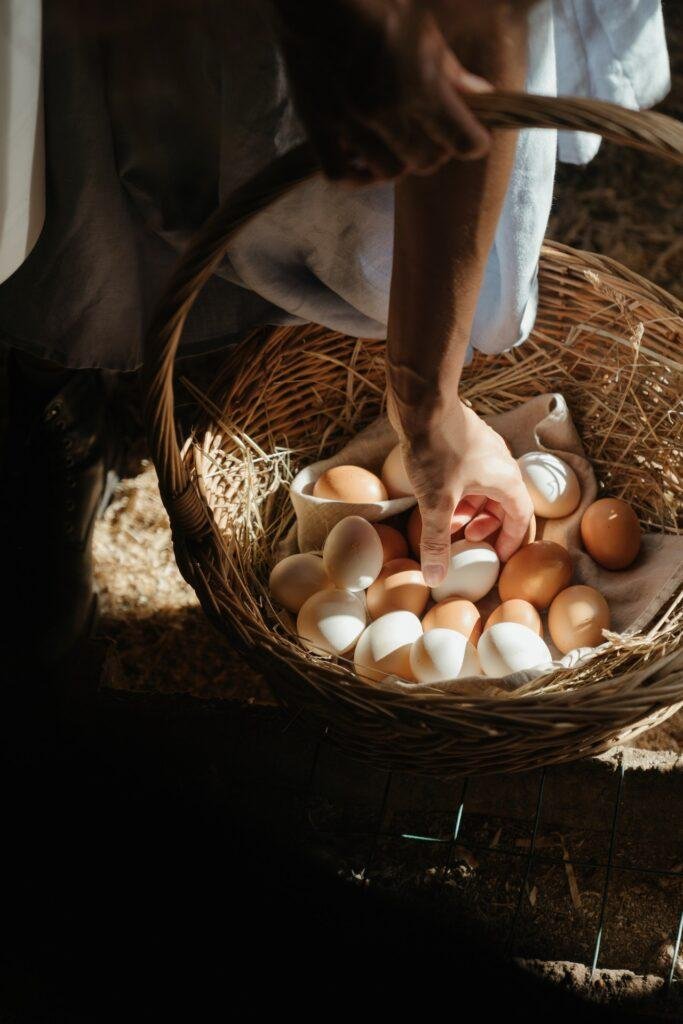
If you already have backyard chickens, then it is cheaper to raise your own chickens at £1.43 per dozen versus £2.20 per dozen shop-bought eggs over their first two years.
To buy three chickens at £15 a bird you will need to spend around £45, and let’s assume you’ll spend £200 on a basic coop and run for them. Your initial outlay is £245.
If we add in your setup costs of around £245 (this will be higher if you decide to go with a more expensive coop and run) this takes your first two years of chicken ownership up to around £420.88.
Your initial outlay and first two years cost of £420.88 divided by 1320 eggs works out to around 32 pence per egg (£0.32) or approximately £3.81 per dozen eggs versus £2.20 for a dozen shop-bought eggs.
This means that, over your initial two-year period, raising chickens foryour eggs will actually cost more than the average price of a dozen shop-bought eggs, but the cost is likely to even out again as food prices get higher over the 8-10 years your birds are likely to live.
Of course, this quick bit of napkin maths doesn’t take into account the number of eggs you may need to buy if your flock isn’t laying during the winter and you haven’t preserved eggs, or if you have a glut of eggs and decide to sell them to friends and neighbours.
How Much Does Raising Chickens Actually Cost?
For anyone who has ever considered raising chickens, the first question is usually “how much will it cost?”
The answer, unfortunately, is not as simple as a straightforward number. There are many variable costs associated with chicken ownership, from the price of chicken feed to the initial cost of purchasing chicks.
Let’s break down all of the associated costs of raising chickens so that you can make an informed decision about whether or not chicken ownership is right for you.
What Chickens Need
Chickens are a fairly easy livestock to keep, especially in the UK. They don’t take up much space, and can even be kept in a back garden or backyard. All they need is a coop for shelter and some fencing to keep them in.
Chickens are omnivores, so their diet is not difficult to manage. A good quality chicken feed will provide all the nutrients they need. They also like to scratch around for insects and other small animals.
As long as they have enough space, chickens are generally low-maintenance animals. They are also relatively disease-resistant. However, it’s important to monitor them for signs of illness and consult a vet if necessary.
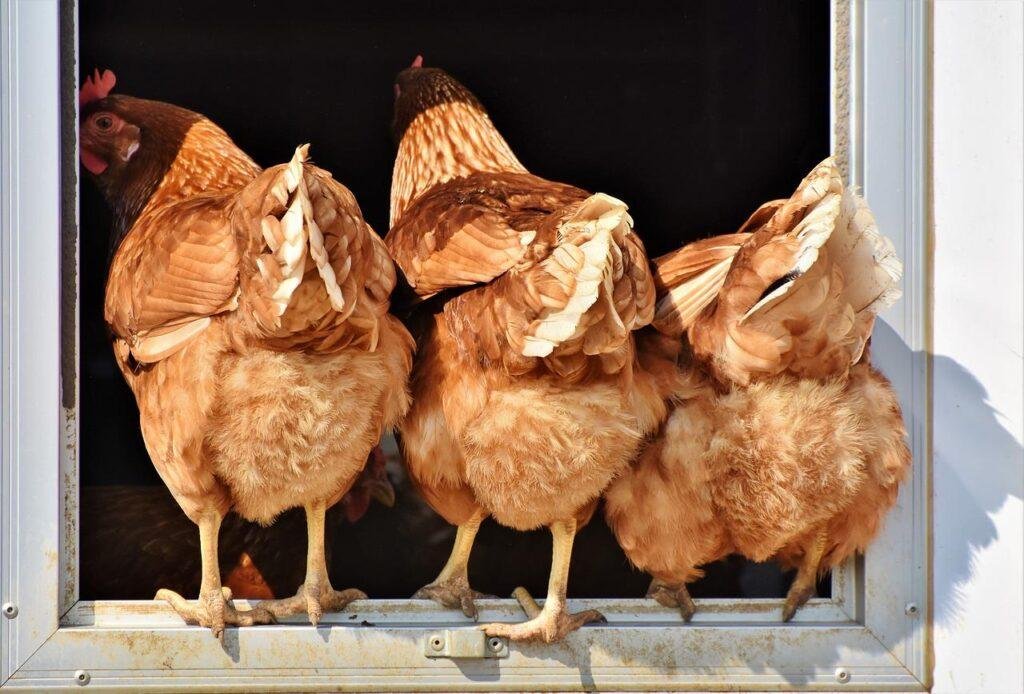
How Much Does A Chicken Coop Cost?
Most of the initial outlay for raising chickens comes from the housing, or chicken coop. The cheapest option is to have three hens in a simple homemade coop and run, you could easily build this on a budget of around £100.
It’s important to know that chickens don’t really want for much, and they will be happy with a fairly basic coop that can be easily made with a bit of spare wood and some DIY knowledge, good chicken wire for the run is definitely worth the investment though.
As far as pre-made coops go, the most expensive option is to have an elaborate coop with a run that costs around £500 and up. This is a good idea for first-time chicken owners but does make raising chickens a pricey investment up-front.
Some of the most popular coops include the following:
| Chicken Coop | Rough Cost | Coop Pros | Coop Cons |
|---|---|---|---|
| Eglu Cube Large Chicken Coop | From £650 for a coop and a very small run | These coops are easy to maintain, easy to clean, and very robust. Being made from recycled plastic makes these quick and funky looking too! | Plastic construction isn’t for everyone. The run is quite small and the large Eglu is only big enough for 6 standard Bovans Browns (the most popular egg layers in the UK). The run is very small, your flock will need extra room. |
| Green Frog Designs Large Chicken House | circa £500 for just the coop (you’ll need a run) | These coops are really well designed, made from recycled plastic and easy to put together and clean. They are great for first-time chicken owners and have a 25-year guarantee! This coop is big enough for around 8-15 standard chickens. | Again, plastic construction may not be for everyone (but these are made from recycled plastic!). You’ll need to get a run to go with this coop for your chickens to scratch around in. |
| FeelGoodUK Windsor Chicken Coop and Run | Around £140 for the coop and small run | This is a great starter coop. It’s made from wood and easy to put together. It looks really good too if you’re going for a more rustic aesthetic. | Wood can rot if not properly looked after. The run area is quite small, you’ll either need a bigger run or space for your chickens to free range. |
| Cocoon Half Moon Chicken House Plus Run | Around £250 including a small run | This is a really well-built, well-designed and good-looking chicken coop. It’s made from sustainable wood and big enough to house around 5 chickens. | This funky-looking coop isn’t for everyone, and without proper care, the wood might rot. The run for this coop is bigger than most, but you may still want to give your hens some more room to roam. |
| Chicken Coop Type 01 Eco Pack by The Hutch Company | Around £120 for the coop on its own. | This is a great basic coop, easy to put together and made from sustainable wood. There is enough room for around 4 standard sizes. | This coop doesn’t come with any run and there is no perch or hutch area, although this can be purchased separately. |
| PawHut Large Chicken Coop with Run | Around £152 for the coop and small run | For the price, this is probably the best setup on this list. It’s made from wood, easy to put together and surprisingly spacious for around 3-4 standard hens. | This is a great coop, but again the run isn’t massive. You’ll probably want to put this coop into a bigger run area or allow your chickens to free-range. |
| Pets Imperial Monmouth Flat Roof Chicken Coop with Outdoor Run | Around £170 for the coop and a larger run | This is another great choice for first-time chicken owners. The run is actually quite a good size too. Made from wood this coop and run will house around 4 standard hens. | There isn’t much to say negatively about this coop and run. The run could be bigger, and the wood will need some maintenance over the years. |
How Much Are Point Of Lay Chickens?
The average price of a point-of-lay hen is around £10-£15 each for a standard egg-laying breed like the Bovans Browns, other breeds like the Light Sussex will cost more, usually anywhere up to around £30 per hen.
Be aware you will need to have at least 2 (preferably 3+) hens as they are social animals and prefer to live in flocks.
This website has a list of breeders throughout the UK selling point-of-lay hens. The good egg-laying breeds will lay around 280-320 eggs in their first year and you can expect this yield for around 5 years before they begin to tail off.
The Cost Of Food
Chickens aren’t particularly fussy eaters, so keeping them well-fed is relatively easy. However, there are a few things to keep in mind when it comes to their diet.
First, raising chickens properly requires a balance of protein and carbohydrates. A good way to achieve this is by feeding them a mix of pellets and grain.
Second, they also require plenty of fresh water. Be sure to change their water regularly and clean their water often.
Lastly, chickens enjoy scratch (a mix of cracked corn and oats) as a treat. Just be sure not to overdo it, as scratch is high in calories and can lead to obesity.
Can Chickens Eat Leftovers?
The simple answer to this is yes, chickens can eat leftovers, but you must be aware that, in the UK, feeding any chickens scraps that have come through a household kitchen is banned. This rule applies to raising chickens as family pets as well as raising chickens that are kept as livestock.
This article from Vet Help Direct explains the laws in a much more comprehensive way and is well worth a read.
If you’re not in the UK, check your local laws to find out if you can feed your chickens on leftover vegetable scraps that would usually be destined for your compost heap.
Just make sure that the food is safe for chickens to eat, and that they have access to fresh water.
The Cost Of Chicken Health Care
Chickens are low-maintenance pets that can pay for their keep by providing fresh eggs for your family. However, there are some costs associated with keeping chickens healthy.
Chickens are susceptible to a number of diseases and parasites.
This means that you may need to take your chicken to the vet for treatment. The cost of vet bills can vary depending on the issue, but it is important to budget for this potential expense.
The good news is though, that chickens are very robust creatures and as long as you are raising chickens that are well cared for and their run is kept clean, they are unlikely to get seriously ill.
There are many potential diseases that chickens can get. Some of the more common ones include:
- Infectious Bronchitis – This is a viral respiratory disease that can be deadly in young chickens. Symptoms include coughing, sneezing, and a runny nose.
- Fowl Pox – This is a viral disease that primarily affects the skin and feathers of chickens. It can lead to scabby lesions on the skin and loss of feathers.
- Newcastle Disease -This is a highly contagious and often fatal virus that affects chickens’ respiratory, nervous, and digestive systems. Symptoms include sneezing, gasping for breath, paralysis, and death.
- Red Mites – Red mites are tiny blood-sucking parasites that can infest chickens and their housing, leading to anaemia and even death.
- Fly Strike – Fly strike is another potential issue, which occurs when flies lay their eggs on the chickens, leading to maggots that can cause serious damage or even kill the chicken.
- Bird Flu – The H5N1 strain of bird flu is a highly contagious virus that can kill chickens in as little as 48 hours. It can also be passed on to humans, and there have been several cases of people who handled infected birds contracting the disease.
Keep an eye out for these issues and others, and consult a veterinarian if you think your chicken may be sick.
The Cost Of Time
Chickens are low-maintenance pets and make great additions to any backyard.
They require very little space and can be kept in a small coop or pen. They also don’t require much time or effort to take care of, making them the perfect pet for busy families.
The time you’ll need to spend with your chickens will depend on how much time they get out of their pen.
If you’re able to let them roam freely during the day, you’ll likely only need to clean their coop and provide food and water.
How Long Do Chickens Live?
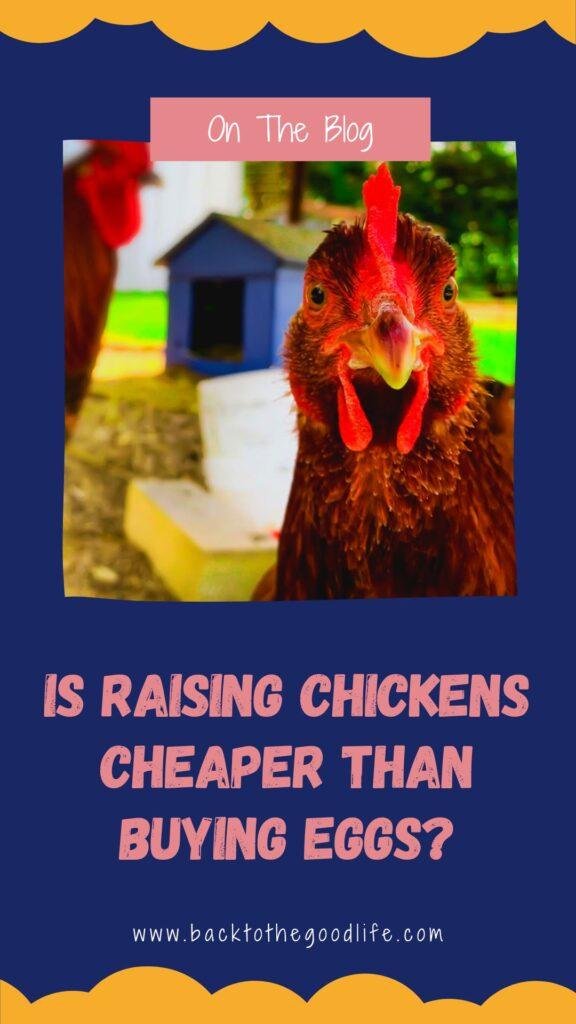
The average lifespan of a backyard chicken is 8-10 years. However, this can vary depending on the breed and the individual chicken’s health. Raising chickens that are well-cared for and have access to plenty of food and water typically live longer than those that do not.
Additionally, chickens that are exposed to predators or disease are more likely to have a shorter lifespan.
Be aware that most chickens pass their peak laying time after 2 years and by 8 years old you’re likely to be getting around one egg a week rather than one a day.
Chickens will also only lay eggs when there is enough sunlight, which means that in the winter you may not get as many eggs per day and may need to look into preserving your eggs.
You can add artificial light into your coop to keep your chickens laying throughout winter, but it’s debatable as to whether this is ethical or not.
Back To The Good Life is a participant in the Amazon Services LLC Associates Program, an affiliate advertising program designed to provide a means for sites to earn advertising fees by advertising and linking to Amazon.com. We also participate in other affiliate programs which compensate us for referring traffic.

